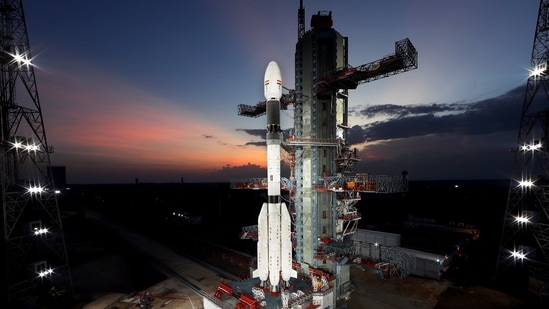Isro to launch GISAT-1 in less than 24 hours, a game-changer for India: 10 points
The satellite is slated to be launched at 5:43am tomorrow on a geosynchronous satellite launch vehicle (GSLV) from the Satish Dhawan Space Centre (SDSC) at Sriharikota in Andhra Pradesh as a part of the GSLV-F10 EOS-03 mission.
Indian Space Research Organisation (Isro) said on Wednesday morning that countdown has already begun for the launch of India's "eye in the sky" - the GISAT-1 Earth observation satellite (EOS). The satellite is slated to be launched at 5:43am on Thursday on a geosynchronous satellite launch vehicle (GSLV) from the Satish Dhawan Space Centre (SDSC) at Sriharikota in Andhra Pradesh as a part of the GSLV-F10 EOS-03 mission. India awaits the much-touted event, which has been set up days before people celebrate the country's achievements on Independence Day.

Also Read | Isro to launch earth observation satellite aboard GSLV Mk III vehicle tomorrow
There are reasons why the GISAT-1 satellite launch is being termed a game-changer as far as India's space ambitions are concerned, owing to its functionality in Geosynchronous Transfer Orbit, before moving on to the final geostationary orbit. Here's a brief explainer on the scope of this satellite launch.
1. Officially termed the Geo Imaging Satellite-1 (GISAT-1), the satellite launched by Isro will keep an eye out on "locations of interest" for India. Essentially, it will serve as India's "eye in the sky".
2. While replying to a question in Parliament earlier this week, Union minister of state (MoS) in charge of the department of space, Jitendra Singh, said that the Earth observation satellite will send Isro 4-5 photographs from across the country daily.
3. On the basis of these photographs, India will be able to monitor and respond to natural disasters and any other short-term events at an alarming pace, according to officials of the space agency familiar with the matter.
4. Moreover, the GISAT-1 satellite will also obtain spectral signatures for agriculture, forestry, mineralogy, cloud properties, snow and glaciers, and oceanography, enabling researchers back home to gain new insight on a host of issues.
5. Isro said that the Earth observation satellite will initially be placed by the launch vehicle in the Geosynchronous transfer orbit (GTO), a highly elliptic geocentric orbit that almost always serves as an intermediate step for satellites before reaching for their final orbit. The GTO Earth orbit has an apogee of 42,164 km (26,199 miles) above sea level, which corresponds to the geostationary altitude.
6. EOS-03 will appear motionless in space once it is in orbit since it will travel at the rate of rotation of the planet. This is important since, unlike low-Earth satellites, the geostationary satellite will not have to constantly readjust its position, paving the way for round-the-clock, real-time monitoring of key areas of interest to India.
7. Isro's GSLV-F10 rocket will install the 2,268-kg state-of-the-art agile satellite GISAT-1 in the geosynchronous orbit. This spacecraft, codenamed EOS-3, will be flown on the fourteenth flight of the GSLV.
8. Isro has made some changes to the fairing capsule used in its satellite. In a first, the space agency said that it is sending an Ogive-shaped payload measuring a diameter of 4 metres this time.
9. The GISAT-1 launch was originally slated for March 5 last year but it was delayed in view of the coronavirus disease (Covid-19) pandemic and subsequent technical glitches. It was later rescheduled twice, once for March 28 and then again postponed to May in view of the second wave of the pandemic, before settling for a final date on August 11.
10. In its latest update, the space agency informed that the filling of oxidiser for the second stage (GS2) of GSLV-F10 has been completed, while the filling of propellant for the second stage has commenced.






